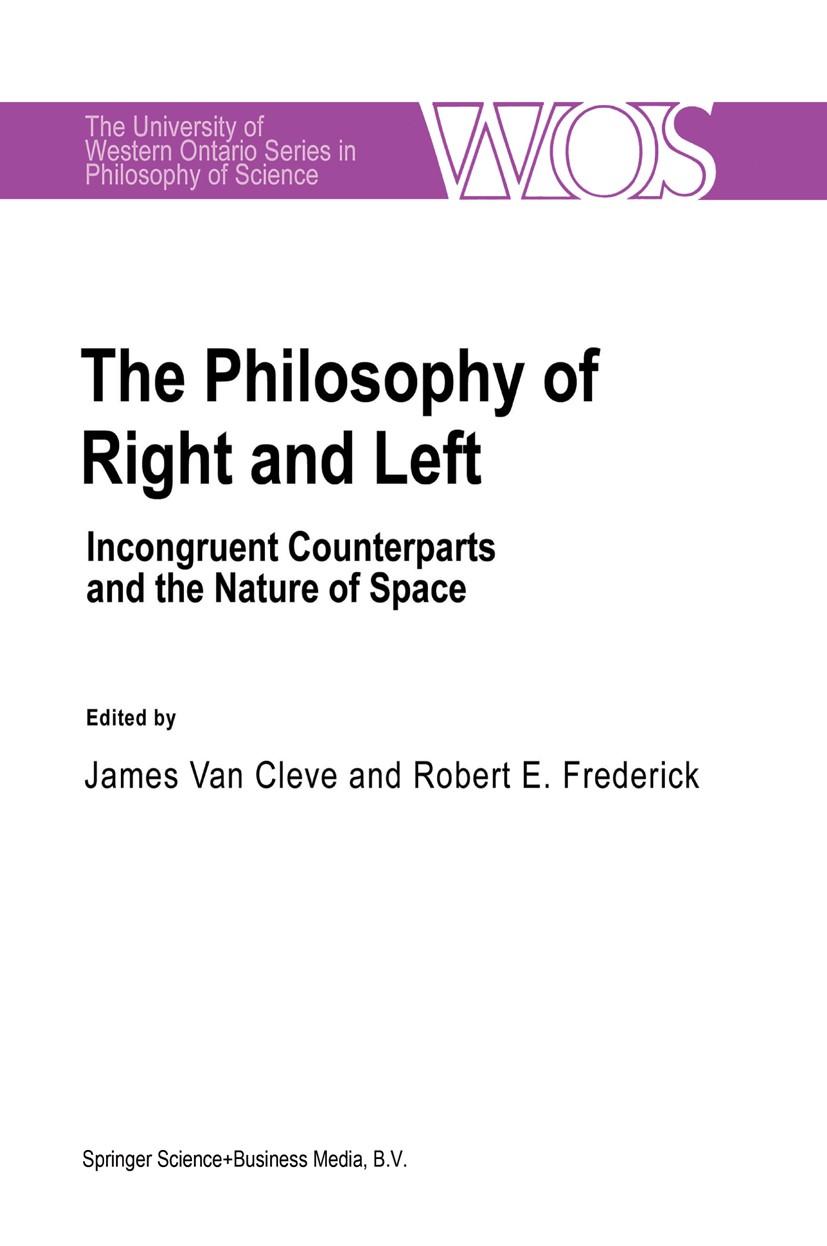| 书目名称 | The Philosophy Of Right And Left |
| 副标题 | Incongruent Counterp |
| 编辑 | James Cleve,Robert E. Frederick |
| 视频video | http://file.papertrans.cn/917/916360/916360.mp4 |
| 丛书名称 | The Western Ontario Series in Philosophy of Science |
| 图书封面 |  |
| 描述 | Incongruent counterparts are objects that are perfectly similar except for being mirror images of each other, such as left and right human hands. Immanuel Kant was the first great thinker to point out the philosophical significance of such objects. He called them "counter parts" because they are similar in nearly every way, "incongruent" because, despite their similarity, one could never be put in the place of the other. Three important discussions of incongruent counterparts occur in Kant‘s writings. The first is an article published in 1768, ‘On the First Ground of the Distinction of Regions in Space‘, in which Kant con tended that incongruent counterparts furnish a refutation of Leibniz‘s relational theory of space and a proof of Newton‘s rival theory of absolute space. The second is a section of his Inaugural Dissertation, published two years later in 1770, in which he cited incongruent counterparts as showing that our knowledge of space must rest on intuitions. The third is a section of the Prolegomena to Any Future Metaphysics of 1783, in which he cited incongruent counterparts as a paradox resolvable only by his own theory of space as mind-dependent. A fourth mention in th |
| 出版日期 | Book 1991 |
| 关键词 | Immanuel Kant; Kant; future; idealism; metaphysics; nature; philosophy; physics; space |
| 版次 | 1 |
| doi | https://doi.org/10.1007/978-94-011-3736-2 |
| isbn_softcover | 978-94-010-5661-8 |
| isbn_ebook | 978-94-011-3736-2Series ISSN 1566-659X Series E-ISSN 2215-1974 |
| issn_series | 1566-659X |
| copyright | Kluwer Academic Publishers 1991 |
 |Archiver|手机版|小黑屋|
派博传思国际
( 京公网安备110108008328)
GMT+8, 2025-11-16 01:54
|Archiver|手机版|小黑屋|
派博传思国际
( 京公网安备110108008328)
GMT+8, 2025-11-16 01:54


